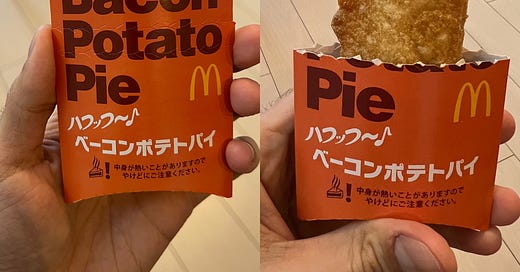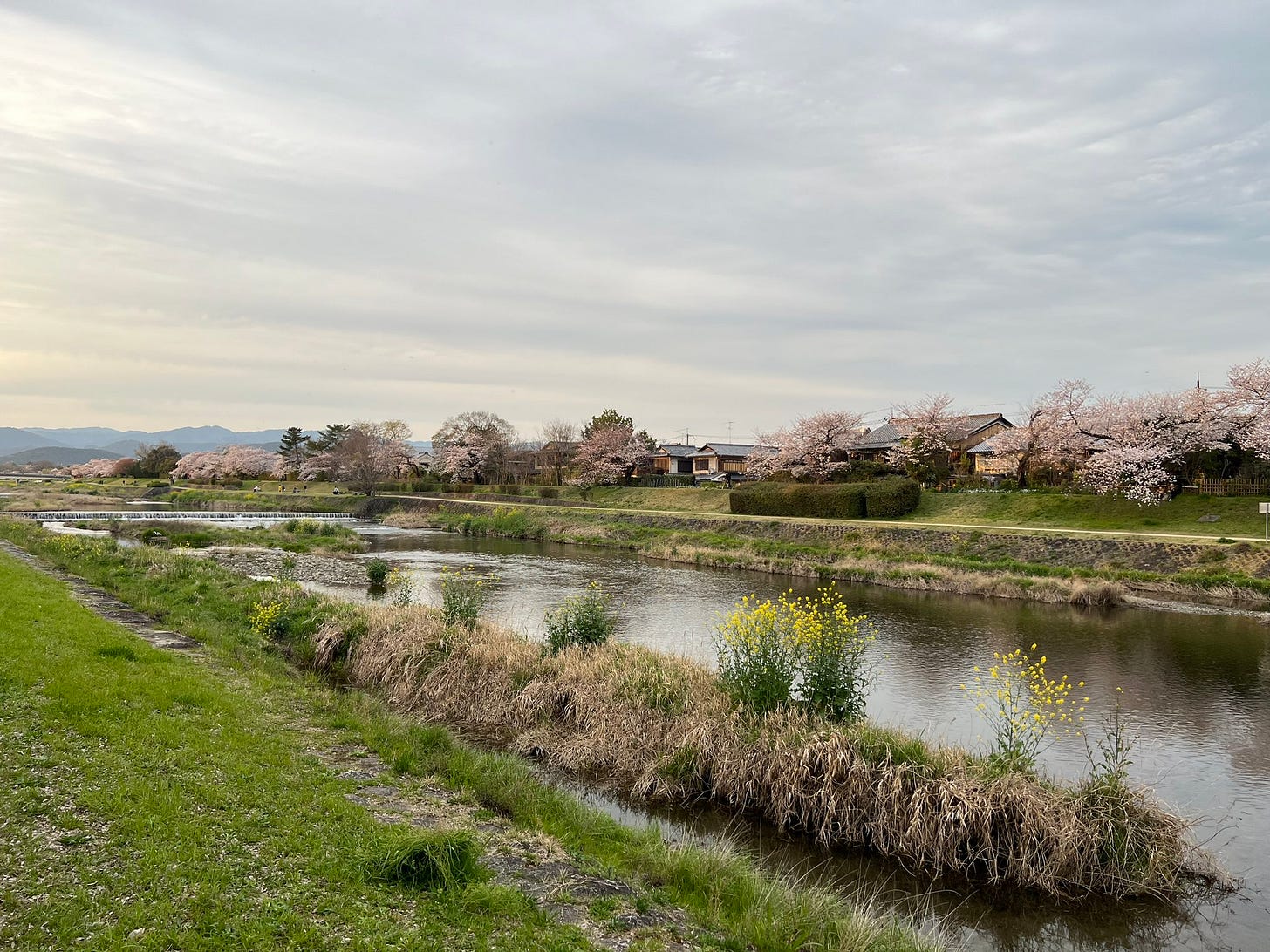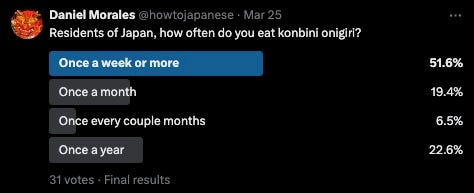This is How to Japanese, a monthly newsletter with something about Japan/Japanese and a dash of いろいろ.
日本・日本語: Sentence Diagramming
I may be the biggest fan of the Edge web browser in the Northern Hemisphere. (In my imagination, there’s a bizarro antipodean Morales who is an equally big fan of Edge.) I switched to Edge from Chrome a couple years ago after hearing about its stability and speed and only recently switched again to Brave for its more robust security and ad blocking.
But I still make use of Edge at work and at home for different reasons, the biggest of which is the Japanese news features on its home page.
Tap the gear icon in the upper right hand corner of the homepage, set it to 日本(日本語) and magically all the news articles will be about Japanese news in Japanese.
You’ve got brilliant study material easily accessible on your monitor, refreshed several times per day. (It does feel like the articles update every time I open a new tab, and it’s occasionally frustrating to see something interesting just as I close a tab or click on another article, thus rendering me unable to ever locate that topic again.)
Once you have this variety of Japanese news available to you, the difficult thing, then, is getting yourself to read it, but I find that browsing headlines is a nice little study break.
I also find myself strangely compelled by the blog-like posts about the latest konbini and fast food items, one of which is the ベーコンポテトパイ (Bacon Potato Pie) at McDonalds.
Microsoft generally aggregates the stories into its own website, like this post about Yamamoto Yoshinobu celebrating his first win as a Dodger. I’ve hunted down the original news article about the Bacon Potato Pie because I wanted to show how something light and ridiculous like this can provide excellent Japanese study. As I was reading through it, I was struck by this sentence:
マクドナルドでは基本的に一度レギュラーから外れたメニューが再びレギュラーに返り咲くことはないのだが、ベーコンポテトパイは復活を望む声が数多く寄せられたことから09年に7年ぶりにレギュラーメニューに復活。
Items that are removed from the regular menu generally do not return, but due to the massive number of calls for the revival of the Bacon Potato Pie, it was added back to the regular menu in 2009 after being gone for seven years.
There’s so much to love here. The use of メニュー (menyū, “menu”) to mean “menu item.” The ending of the sentence on a kanji compound instead of a verb. And more than anything the simplicity of the overall sentence structure compared with the complexity of the clauses that are inserted into that structure.
Quibble with my translation all you want, I don’t mind. That’s not the point here. I want to use this sentence to show the importance of diagramming Japanese sentences to understand how they work and to create stronger skeletons for your own Japanese sentences.
The first thing to notice is that it ends in a noun. Well, technically a noun, but also a kanji compound without a verb attached: 復活 (fukkatsu, revival/resurrection/rebirth). Looking first at the end of this sentence, which is generally a good strategy given that Japanese sentences are backwards, we can simplify this to:
ベーコンポテトパイは復活。
Or, to put it even more simply:
AはB。
How do we make this make sense? What’s being left out? In this case, it’s the passive form of the past tense of する (suru, to do): された (sareta).
復活した does get used, such as when you’re starving, eat a big meal, and feel brought back to life. Here, however, the Bacon Potato Pie is being brought back by a separate actor (perhaps Ronald himself?), so passive makes the most sense. Thus we have:
AはBされた。
ベーコンポテトパイは復活された。
So we have our core structure for the second half of the sentence. The first half can be distilled into a much simpler structure:
XではYが
So overall we have:
XではYが、AはBされた。
You already have a fairly visceral sense of the Japanese, how the logic is flowing, and what the writer is trying to say, even without any content in the sentence! “At X, Y is the case, but as for A, it was B’d.”
Building out our skeleton, we start to see how the the gears are turning:
X ではYことはないのだが、AはCことからBされた。
At X, Y does not happen, but as for A, due to C, it was B’d.
Digging in even further, we can see the clauses that make up Y and C:
Y: 基本的に一度レギュラーから外れたメニューが再びレギュラーに返り咲く
C: 復活を望む声が数多く寄せられた
We could even simplify these.
Y → Zが返り咲く: Z returns
C → Dが寄せられた: D were delivered/received
Giving us:
X ではZが返り咲くことはないのだが、AはDが寄せられたことからBされた。
At X, Z does not return, but as for A, due to D being received, it was B’d.
Going any further will essentially build out the sentence in its entirety and define each word for you, so I think I’ll end the exercise here, but I hope that the point comes across. Sentences like this one can be intimidating at first. By locating the overall structure of the sentence on different levels of granularity, you give yourself stepping stones to complete understanding.
The ultimate goal is to be able to read and understand sentences without pausing to break them down—to parse them in the moment—and I think the only way to achieve that is to read sentences and break them down over and over again until you build up a volume that leads to a natural understanding of the language. Slowly the number of sentences you need to dissect will decrease, and you’ll find yourself living in the Japanese sentences as they are.
You can also apply these structures to your own writing. Beg, borrow, and steal structures that you encounter. Save them. Break them down into the basics, and then fill them with your own ideas. Do this with enough sentences, and I promise you’ll find brilliant, original ideas draped over the same skeletons we all have underneath.
いろいろ
An audio version of the newsletter is up online over at the blog with a few additional articles that might make good reading material!
Hanami on the Kamogawa River in Kyoto was very nice:
This is my latest favorite recipe: Baked/nuked sweet potato with chickpeas, spinach, and sesame dressing. Super easy to put together in 15 minutes or so if you use a microwave, and pretty healthy.
 @christinasots_15/31 of our Veganuary Recipes! Watch to the end to see how to perfect the baked potato to filling ratio. Hint: It involves some smoking and lots of extra sauce. The tahini butter sauce is inspired by the wonderful @lallimusic! I’ve tested three different ways to bake a sweet potato, you can find them all up on site now via the link in bio. Link to the recipe in our bio x #vegan #vegantiktok #veganuk #ukvegans #plantbased #veganuary #veganuary2023
@christinasots_15/31 of our Veganuary Recipes! Watch to the end to see how to perfect the baked potato to filling ratio. Hint: It involves some smoking and lots of extra sauce. The tahini butter sauce is inspired by the wonderful @lallimusic! I’ve tested three different ways to bake a sweet potato, you can find them all up on site now via the link in bio. Link to the recipe in our bio x #vegan #vegantiktok #veganuk #ukvegans #plantbased #veganuary #veganuary2023Tiktok failed to load.
Enable 3rd party cookies or use another browserブラッシュアップライフ (Brush-up Life), my favorite J Drama of the last few years, is available in English translation on Netflix as “Rebooting”! I can’t recommend it highly enough. It’s a variation on the Groundhog Day idea, but very unique. It’s also free on TVer (for a limited time?).
I posted this poll on Twitter last month, and while this isn’t exactly a representative sample, it is heartwarming to know that Japan residents who follow me are eating konbini onigiri regularly. Konbini onigiri are one of the most reliable and affordable hunger busters around.









Thank you for this timely reminder to break down sentences for better understanding! I'm lowkey studying for the N1 now & this will definitely come in handy. Also, I too eat konbini onigiri at least once a week (there's a Seven Eleven on the ground floor of my office building...).